#Commodore home computers
Explore tagged Tumblr posts
Text






🎄💾🗓️ Day 13: Retrocomputing Advent Calendar -🎄Amiga 500 💾🗓️
The Amiga 500 is considered one of Commodore's most important home computers, introduced in 1987; it was important because of how advanced the features were for the time. It was based on a Motorola 68000 CPU running at 7.16 MHz in NTSC versions and at 7.09 MHz for PAL ones, with the main version of 512 KB RAM expandable up to 9 MB. Its OCS provided respectable graphics performance, going up to 736×567 interlaced, with 32 colors out of 4096. The sound system consisted of four 8-bit PCM channels and could give out stereo at as high as 28 kHz. With the keyboard integrated and a compact design, it was ready for home users, while the multitasking operating system, AmigaOS, differentiated it from the rest. At a price the market could afford and featuring multimedia capabilities, this combination contributed to its popularity as it went on to sell about 2.6 million units worldwide.
Making of the Amiga bouncing ball. https://www.generationamiga.com/2020/04/14/amiga-history-the-story-of-the-boing-ball/
Have first computer memories? Post’em up in the comments, or post yours on socialz’ and tag them #firstcomputer #retrocomputing – See you back here tomorrow!
#amiga500#commodore#amiga#retrocomputing#firstcomputer#1980s#computinghistory#vintageelectronics#oldschooltech#computerdesign#amigaos#technostalgia#motorola68000#classiccomputers#retrohardware#gamedevhistory#multimedia#pcm#keyboarddesign#personalcomputing#vintagetech#digitalnostalgia#computingmilestones#techhistory#nostalgicvibes#classicgames#homecomputing#ocschipset#computersound#retrogaming
164 notes
·
View notes
Note
What was the purpose of the panels of blinking lights on those big mid-century computers? Were they showing calculations in progress?
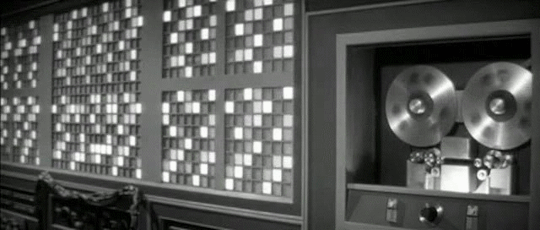
Excellent question, this is one of my favorite subjects! Blinkenlights serve a number of functions. Hollywood tended to use just the lights to make it look like a computer was busy doing something, but real computers had more than just lights on their front panel. Let's walk through a few examples of use cases with photos of computers I've seen over the years at museums and vintage computer festivals:


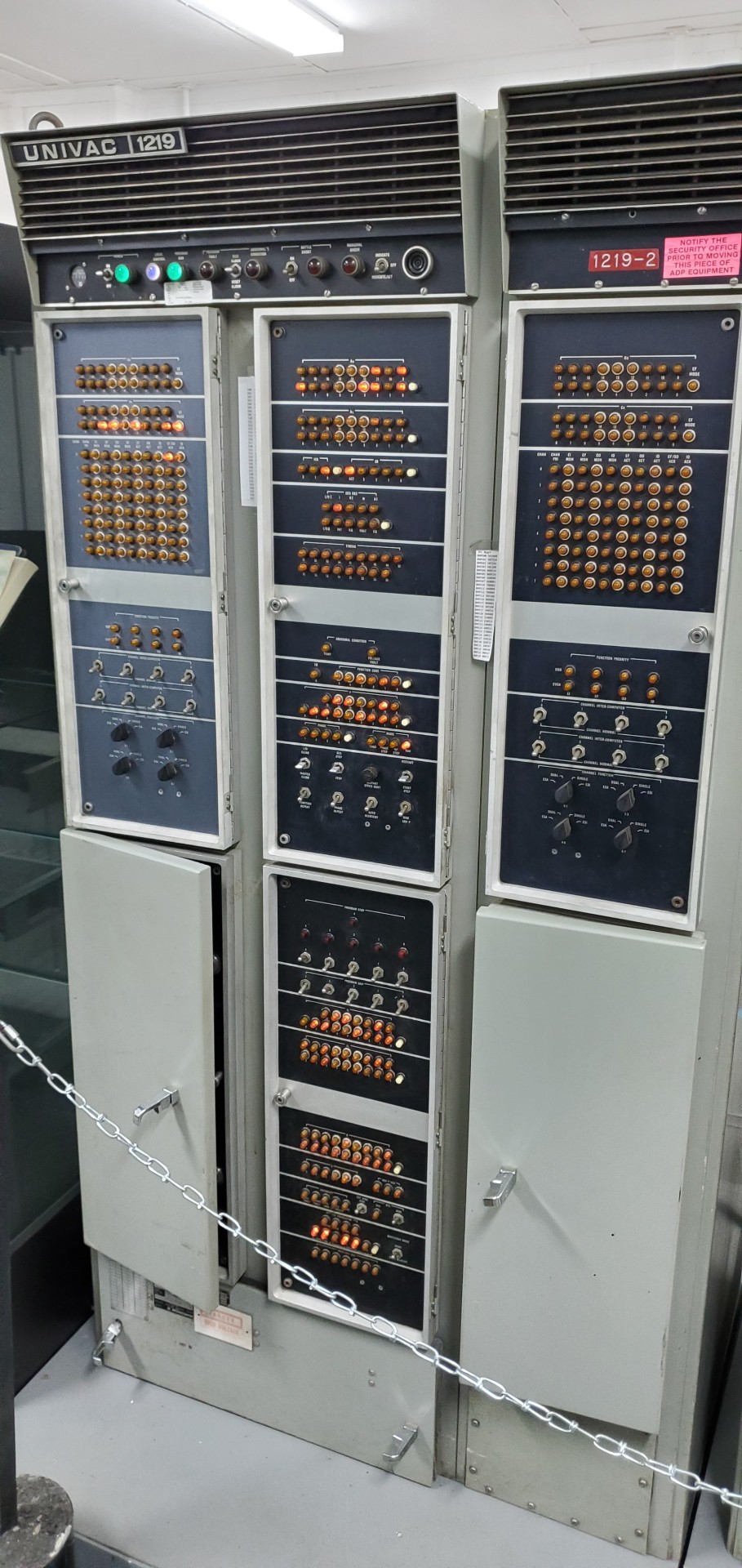
Some front panels were built to be used for diagnostics. Computers like these were primitive enough that they required constant care and debugging to do their jobs, especially the early vacuum tube machines (everything pictured here is transistorized). You could tell what peripherals were being used, but also check the status of registers, carry flags, status flags, data, various buses, etc. It was also a way to see if a program had "gone off into the weeds" and started doing things that were irregular, possibly due to a software bug, or a problem with the hardware.
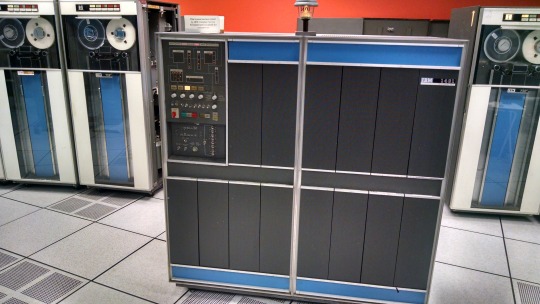
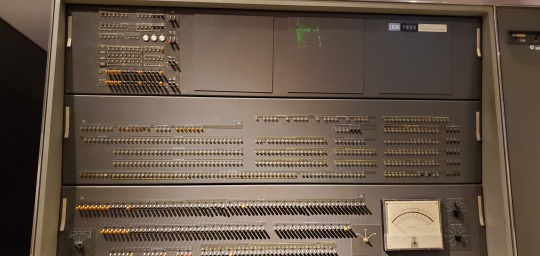
On many of these machines, you can enter programs directly into the main memory using the front panel, but it's an incredibly tedious process -- something to be avoided if possible. Consider it a last fallback.


Other times, it's a starting point, which we call "bootstrapping" (this eventually evolved into the term "booting"). You aren't likely to program everything on such a limited interface, but you are more likely to enter in a small program that can tell the computer how to run a more complex peripheral, like a paper tape or punch card reader, or maybe some type of magnetic storage device. Once you can get a program loading off of a larger permanent storage device, you can load up software to interface with a terminal of some kind which is much easier.


Eventually, the microprocessor made home computers a possibility, but many were only equipped with a front panel out of the box. You would have to add in a serial card, more RAM, possibly some ROMs, and either a teletype or glass terminal in order to get a more sophisticated and intuitive interface from the computer, capable of programming in a higher level language. Some were considered more like trainers, or hobbyist devices, and simply lacked that ability, meaning all you got was a front panel with switches and lights.


I made my own front panel to see what the experience was all about:

Then everything changed in 1977, with the introduction of these three machines: the TRS-80 Model I, the Commodore PET 2001, and the Apple II. They were what you might call "appliance computers" and they had no need for a front panel.
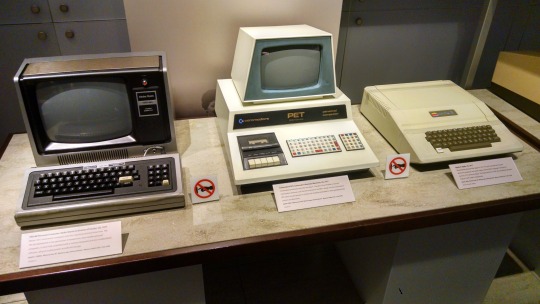
Hopefully that answered your question!
728 notes
·
View notes
Text
Frank Bruno's Boxing , what was it and has anyone heard of this obscure “ Bootleg “ Punch Out game ?
I came across this last night while my friend was browsing the Punch Out wiki , he asked me “ who is Fling Long Chop ?” I’ve never heard of the name so I decided to look it up for myself , the first image I had seen was Dragon Chan , or at least that's who I thought it was. Going into Sir Fling Long Chop’s profile led me down such an interesting rabbit hole I didn't think I would find myself in.
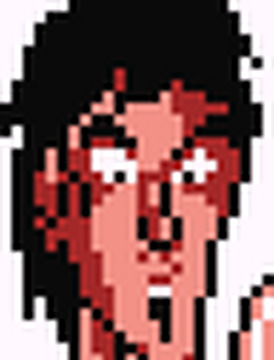

Frank Bruno's Boxing , lesser known as Frank Bruno's World Championship Boxing, is an unofficial clone of Super Punch-Out for the Commodore 64 , ZX Spectrum , and Amstrad. There’s a version with ..poor coloring but somewhat legible display , and a more rougher “ Colorless “ version , has color , just more lifeless. To put it almost simply , Elite System's ( The creators of this wonderful gem ) is a British video game developer and publisher created in 1984. Known for producing home computer conversions of popular arcade games. Obviously Punch Out being one of them. It was a computer Punch Out on a budget ! Taking a lot of “ Inspiration “ from the original arcade 1984 Punch Out assets. Fun fact , for those who are unaware … Frank Bruno is a real life boxer who did face against Mike Tyson and was beaten by the bloke … twice.

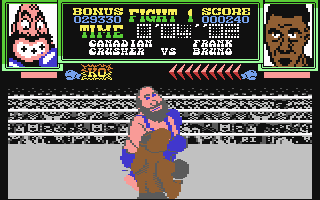
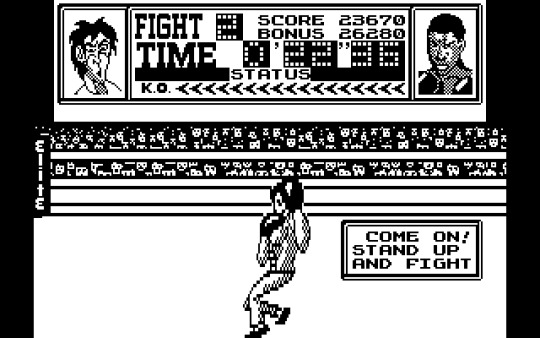
“ Inspiration “ , only having few original characters , the ones that are “ Inspired “ are just straight rips of the original. For example Dragon Chan now becoming Fling Long Chop , and Andra Puncheredov being Soda Popinski. This game's characters that are completely their own are down right RACIST. Punch Out is known for their stereotypes however this game takes that to a whole new level , it’s horrid. The worst being “ Tribal Trouble “ who’s opening song is “ The Lion Sleeps Tonight “ by The Tokens. I kid you not. Another great example is “ Antipodean Andy “ , what had they been thinking ?
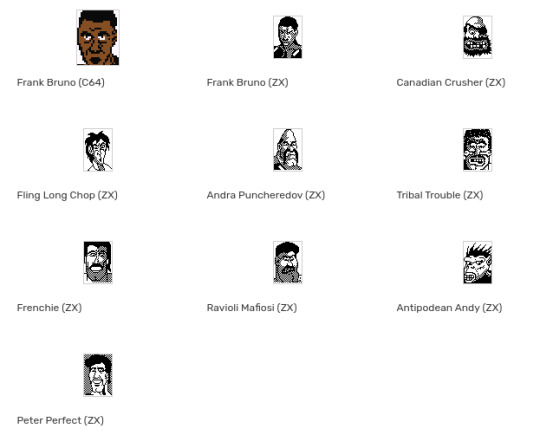
So what is this exactly ? Some bad rip off or is this somehow official ?
It is a modified port of The Super Punch-Out arcade game for the Commodore 64 , published exclusively in Europe by Elite Systems. I’m not 100 percent certain if it is authorized by Nintendo or not. However if it hadn’t been , you think they would’ve done something ? Taking into account how protective Nintendo is over their properties. However from what I can find , Nintendo has no involvement… and it must have just gotten swept under the rug , and that’s completely understandable considering just how obscure this topic is. Nintendo had not given them permission to use their assets from Super Punch Out.
Apparently , Frank Bruno is getting removed from the Punch Out wiki , so before that happens , I wanted to bring this hidden “ gem “ to light just because it’s just so fascinating to me in a strange way. I think as a community , we can make something of this. Perhaps we can change these characters and save them , and I hope I’d be able to shed some light on this rather obscure topic to the community ! What do you all think of it ? I found some more interesting Punch Out artifacts … should I write of them aswell ?
#Punch out#super punch out#Frank Bruno's Boxing#Frank Bruno#bootleg#retro games#nintendo#essay#writing#essay writing#video game analysis
36 notes
·
View notes
Text





Modulus Service & Security robot by Sirius, Italy (1984). Modulus is a Commodore 64 driven personal robot available in three separate versions, the base unit, the Service & Security robot, and the full 'Moddy'. "The Service & Security robot is obtained by fitting the Techno-Cake home-security and service unit onto the Base. The components allow the robot to signal the presence of smoke, gas, and intruders. Fitting the robot with a support attachment and plotter-device, the robot can utilize a humidity probe to detect water leaks. At the first sign of danger, it can inform a computer or trigger a built-in siren." The Techno-Cake can hold up to 8 interchangeable hardware and software slices, including an arm with ample freedom of movement and considerable gripping power.
49 notes
·
View notes
Text

Cyborg-64 Gazzette October 11, 1982
Another small start from which larger things developed, this nine-page issue was mostly photocopied ads talking up Commodore's new home computer, the Commodore 64. One hand-printed note on the first page did promise a way to kickstart that computer by appropriating the software of the other big 6502-powered systems.
24 notes
·
View notes
Text

On Incremental Improvement:
With VCF Southwest almost here, and having run into a dead end on getting NetBSD running on my 68030 homebrew computer, Wrap030, I decided to circle back to my multi-user BASIC kernel. There are some important features the system is needing to get it ready for running as an exhibit for all three days of the show.
Memory Protection
There's a fun couple fairly standard BASIC commands, PEEK and POKE. The former will read a byte of memory from a specified address, and the latter will write a byte. These were commonly used in the 8-bit era to manipulate hardware registers. For instance, POKE 53280,1 on the Commodore 64 would set the screen frame color to white by writing 1 to the address 53280.
While there were ways to cause problems by writing bad values to the wrong address, on a single-user home computer the impact was only to the one user. On a multi-user system however, PEEK could be used maliciously to look at private data from other users. An errant POKE command could overwrite user data, kernel data, even code being run by users.
A good multi-user system needs some way to prevent one user from accessing memory used by another user, and to prevent users from overwriting shared code. The Motorola 68030 has a couple tools to solve this problem: separate supervisor & user states, and a built-in Memory Management Unit (MMU).
The supervisor state has access to all instructions and registers in the CPU. The user state is blocked from running certain instructions that would change system state or CPU configuration. I was already using supervisor state for my kernel and user state for BASIC programs, but it doesn't prevent users from accessing memory that doesn't belong to them.
That's what the the MMU is for.
The MMU takes the memory address the CPU is outputting (the Logical Address) and uses a table to remap it to a new address (the Physical Address). That table can hold additional information about how a particular region of memory can be used, and can be configured by the kernel at any time.
So we can, for instance, set up the table to mark the program code for BASIC as read-only when the CPU is in the user state. Or remap the memory allocated to each user so that it always starts at logical address zero. In fact, there's also nothing that requires the entirety of physical memory to be mapped — so as far as one user program is concerned, the other users' memory doesn't even exist.
Adding MMU support to my Multibasic kernel has been a goal from the beginning. It's a challenge though. The 68k MMU is a very capable, very complex beast. It supports tables that are up to four levels deep, supports page sizes from 256B to 32kB, and can use separate data and code tables for both supervisor and user states. It's something I've struggled to understand, but my work with NetBSD helped show me how to use it.
I decided to use 32kB pages and only map the 16MB of actual RAM I have installed. This allowed me to use a single-level table with 512 entries. During startup, the kernel initializes the supervisor table and a table for each user. When switching users, only the Root Pointer register in the MMU needs to be updated point to that user's table.
I was able to get the table initialization running after a few rewrites. And then realized I had forgotten to update the user initialization routines to point to their new logical addresses. And I was using the wrong table entry marker for the user tables, so the MMU was expecting more table entries instead of reading page descriptors. This got me to the point of the kernel running with the MMU enabled and I could even run a user program or two in BASIC, but if I tried to run three user programs, things got ... weird.
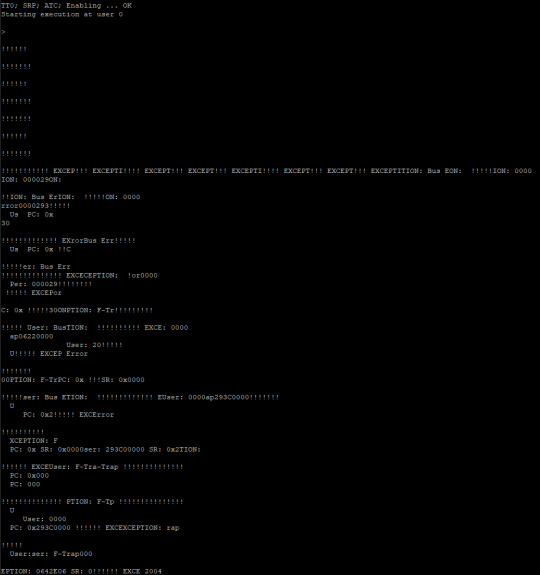
Overlapping exceptions is never a good sign. Or, it usually isn't. In this case I was trying to print out some debugging data for exceptions which takes a relatively long time. Longer than my timer interrupt, in fact … I had forgotten to disable the timer at the start of an exception handler. My timer was doing exactly what it was supposed to, I just needed to stop it when handling exceptions. That fixed the overlapping exceptions, but I still couldn't run more than two programs at a time.
This one had me stuck for a while, but I finally decided to review the NetBSD source to see what I was doing differently. All of my initialization and task switching code looked similar; there was just one thing that stood out to me as being different — NetBSD was clearing CPU cache on task switch and I wasn't. The 68030 doesn't have a large cache, surely that's not the probl…
It was the CPU cache.
Once I added the single instruction to clear cache when switching users, everything ran smoothly no matter how many programs I ran.
Loading from Disk
Having to enter programs by hand each time you want to run one is no fun. It's tedious and error-prone. Sure, it was common four decades ago for books and magazines to publish listings of BASIC programs. But after taking the time to carefully enter in hundreds of lines of code, most people are going to want to save the program to disk so it can be quickly reloaded later.
In my case, I would like to have a few demos, games, and interactive programs available for my exhibit. I do not want to have to type them in by hand every morning. It's time I finally sit down and figure out how to add file loading to EhBASIC.
The EASy68k applications page has a link to an archive of EhBASIC that supports the EASy68k simulator's I/O traps. This was the perfect starting point. All I needed was to add new system calls to my kernel for similar file open, read, and close operations, then update the EhBASIC file handling routines to use them.
I started by copying the Elm-Chan FAT filesystem library I had used for my bootloader into my kernel. It's a great minimal C library for FAT-formatted disks that doesn't take much to get up and running. I was able to write wrapper functions for its f_open(), f_read(), and f_close() functions that worked with my existing system call format.
This went surprisingly well. I found that EhBASIC was trying to re-open the file after each line, so I did have to update my code to keep track of whether it had reached the end of the file yet. That got me to the point where it would read the entire program and echo it to the terminal, but it couldn't run anything. It turns out EhBASIC was using address refused A0 for a line pointer; gcc C convention treats A0 as a scratch register that doesn't normally need to be saved. I just had to be sure to save the register contents to memory before calling the filesystem library functions.

Finally, I can load programs from disk instead of having to type them in manually every time!
Printing Disk Contents
It would be really helpful to be able to see what programs are on the disk. Loading a program requires entering the LOAD command followed by the filename. That's hard to do without knowing what programs are available.
Luckily, the Elm-Chan FatFs library also has functions for reading directory contents. I just needed to add three new system calls for the directory counterparts to the previous file operations.
EhBASIC didn't already have a command for printing directory contents though, I would have to add one. I wrote the function and was able to use the built-in CALL command to run it by the compiled address of the function, but CALL $100178 is not the easiest to remember.
I tried adding a new command, CAT (short for Catalog, a common directory listing command for early BASIC systems), to the command tables. All it would give me was a Syntax Error, however. I eventually stumbled onto the answer for this one — when parsing a line of code, EhBASIC will check if the token for a given keyword is greater or less than the token for the TAB keyword. Keywords less than TAB are treated as commands that can be executed at the beginning of a line; keywords greater than TAB must follow another statement such as PRINT. All I needed to do was move my new CAT command above TAB in the table.
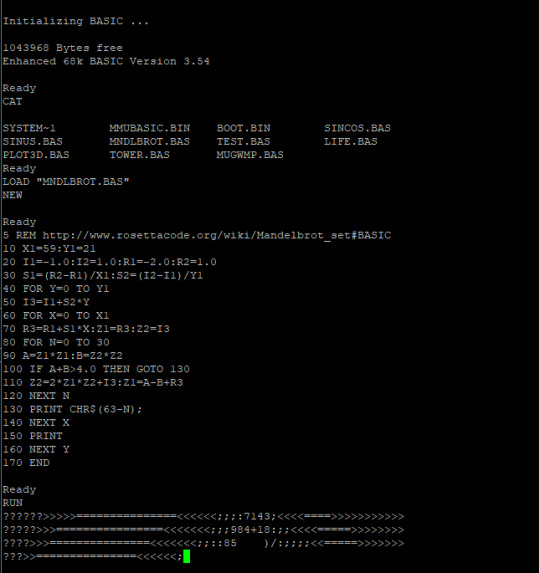
On Incremental Improvement
These three new features go a long way towards making the system something robust enough and usable enough that I feel good about running it as an interactive exhibit for VCFSW this year.
But more than that, these new features bring my little Multibasic kernel just that much closer to a "proper" operating system — it is now a preemptive multiuser kernel with hardware memory protection and the ability to load programs from disk.
It currently does not support saving files to disk (intentionally omitted for now), doesn't support dynamic memory allocation, and can't run any processes other than the eight instances of BASIC. But it is starting to look the part. And I am definitely proud of the work that I have managed to do on this project.
If you would like to see Wrap030 running Multibasic in person, I will be exhibiting it June 20-22, 2025 at VCF Southwest in Richardson, Texas. This will be the third annual VCFSW since it was rebooted after a decade-long hiatus, and the third year in a row that I have had the opportunity to exhibit and volunteer for the show. This year is bigger than ever with over 90 exhibitors & vendors and a full schedule of workshops, talks, & presentations. If you're in the area, I highly recommend attending!
#wrap030#mc68030#motorola 68k#motorola 68030#debugging#vcfsw#vcf southwest#retrotech#homebrew computing#homebrew computer#retro computing#vintage computing#vintage computer festival#vintage computer festival southwest 2025#os development#operating systems#basic programming
15 notes
·
View notes
Text






Enterprise 64/128 (1985) (formerly ELAN 64/128)
After the 1982 introduction of the ZX Spectrum, Hong Kong trading company Locumals commissioned Intelligent Software to develop a home computer in the UK. During development, the machine had the codename DPC. The machine was also known by the names Samurai, Oscar, Elan, and Flan before the Enterprise name was finally chosen. The succession of name changes was mainly due to the discovery of other machines and companies with the chosen name.
The Enterprise has a 4 MHz Z80 CPU, 64 KB or 128 KB of RAM, and 32 KB of internal read-only memory that contains the EXOS operating system and a word processor. The BASIC programming language was supplied on a 16 KB ROM cartridge, it had to be inserted into the left side of the machine. Cartridges containing other programming languages (Forth, Lisp, Pascal) were also produced. In this way, games or user programs could be stored on the cartridges. The maximum supported ROM size of the cartridges was 64Kb.
Two application-specific integrated circuit (ASIC) chips take some of the workload off of the central processor. They are named 'NICK' and 'DAVE' after their designers, Nick Toop, who had previously worked on the Acorn Atom, and Dave Woodfield. 'NICK' manages graphics, while 'DAVE' handles sound and memory paging. The Z80, like all 8-bit CPUs, could only address 64 KB of memory, so "bank switching" was required to access more memory. The Enterprise's memory can be expanded to 4 MB without any tricks (and this is a 'plain' 8-bit machine like the ZX-Spectrum or Commodore 64)
Enterprise was announced to the press in September 1983, and some 80,000 machines were pre-ordered by the time of its April 1984 sales launch. The product did not ship until 1985, by which point the UK home computer market was already dominated by the ZX Spectrum, Commodore 64, Amstrad CPC, and Acorn BBC Micro with the 16-bit era on the horizon (Commodore Amiga, Atarti ST, etc)
After the initial manufacturing run of 80,000 units, it is believed that no further units were made, so the Enterprise is among the rarer home computers of the 1980s.
source of images: 8bit home computer museum
more info: https://en.wikipedia.org/wiki/Enterprise_(computer)
https://www.theregister.com/2013/10/24/elan_flan_enterprise_micro_is_30_years_old/
#enterprise128#enterprise64#elan128#elan64#8bit#z80#british 8bit#retrocomputing#retro computing#retro gaming#retrogaming#zx spectrum#commodore 64#amstrad cpc#BBC micro#gif#80s#80s computer#vintage computer#computers
13 notes
·
View notes
Text
The story of Microsoft's meteoric rise and IBM's fall has been on my mind lately. Not really related to any film, but I do think we're overdue for an updated Pirates of Silicon Valley biopic. I really think that the 80's and 90's had some wild stories in computing.
If you ask the average person what operating system your computer could have they'd say that if it's a PC it has Windows, and if it's a Mac it has macOS. All home computers are Macs or PCs, but how did it get this way?
In the 70's everyone was making home computers. Tandy was a leather supply goods company established in 1919, but they made computers. Montgomery Ward was a retail chain that decided to make their own store brand computers. Commodore, Atari, NEC, Philips, Bally and a million other assorted companies were selling computers. They generally couldn't talk to each other (if you had software for your Tandy it wouldn't work on your Commodore) and there was no clear market winner. The big three though were Tandy (yeah the leather company made some great computers in 78), Commodore and Apple.
IBM was the biggest computer company of all, in fact just the biggest company period. In 1980 they had a market cap of 128 billion dollars (adjusted for inflation). None of these other companies came close, but IBM's success was built off of mainframes. 70% of all computers sold worldwide were IBM computers, but 0% of it was from the home market.
IBM wanted to get into this growing and lucrative business, and came up with a unique plan. A cheap computer made with commodity parts (i.e. not cutting edge) that had open architecture. The plan was that you could buy an IBM Personal Computer (TM) and then upgrade it as you please. They even published documentation to make it easy to build add ons.
The hope was that people would be attracted to the low prices, the options for upgrades would work for power users, and a secondary market of add ons would be created. If some 3rd party company creates the best graphics card of all time, well you'd still need to buy an IBM PC to install it on.
IBM was not in the home software business, so they went to Microsoft. Microsoft produced MS-DOS (based on 86-DOS, which they licensed) but did not enforce exclusivity. That meant that Microsoft could sell MS-DOS for any of their competitors too. This was fine because of how fractured the market was. Remember, there were a lot of competitors, no one system dominated and none of the competitors could share software. Porting MS-DOS to every computer would have taken years, and by that point it would be outdated anyways.
IBM saw two paths forward. If the IBM PC did well they would make a ton of money. Third party devs like Microsoft would also make a lot of money, but not as much as IBM. If it failed, well then no one was making money. Either way the balance of power wouldn't change. IBM would still be at the top.
IBM however did not enjoy massive profits. It turns out that having cheap components and an open architecture where you could replace anything would... let you replace anything. A company like Compaq could just buy their own RAM, motherboards, cases, hard drives, etc. and make their own knockoff. It was easy, it was popular, and it was completely legal! Some people could order parts and build their own computer from scratch. If you've ever wondered why you can build your own computer but not your own tv or toaster, this is why. IBM had accidentally created a de facto standard that they had no control over.
In 1981 IBM's PC was worth 2.5% of the marketshare. By 1995 IBM PC compatibles were 95% of the marketshare, selling over 45 million units and IBM had to share the profits with every competitor. Apple is the only survivor of this time because the Macintosh was such an incredible piece of technology, but that's a different story for a different time.
And Microsoft? Well building an OS is much harder than putting together a few hardware components, so everyone just bought MS-DOS. With no exclusivity agreement this was also legal. That huge marketshare was now the basis for Microsoft's dominance.
IBM created a computer standard and gave the blueprints to every competitor and created a monopoly for Microsoft to boot. And that's why every computer you buy either is made by Apple with Apple software, or made by anyone else with Microsoft software. IBM is back where they started, having left the home computer business in 2005.
It's easily the biggest blunder in computer history. Other blunders have killed companies but none were quite as impactful as this one.
This story, and many others I know of, I first read in "In Search of Stupidity", a book authored by a former programmer and product manager that was able to see a lot of this first hand. I make no money advertising this book, I just had a great time reading it.
#software#hardware#microsoft#ibm#apple#tandy#nec#compaq#Wordstar#borland#ashton-tate#lotus#Ms-dos#windows#word#excel#access#commodore#atari#philips#bally#In search of stupidity#macintosh#montgomery ward#pirates of silicon valley
10 notes
·
View notes
Text
Above you can see all computer models.
Post #266: Opinion Poll by "Basic Retro Programming", Question: Which home computer was or would have been your favourite between the 1970s and 1980s, 2023.
#retro tech#vintage tech#retro style#retro computing#vintage computing#opinion poll#opinion survey#poll#survey#amstrad#schneider#apple#atari#commodore#amiga#ibm#nec#sharp#radio shack#toshiba#sony
121 notes
·
View notes
Text
Picks and Shovels Chapter One (Part 2)

Picks and Shovels is a new, standalone technothriller starring Marty Hench, my two-fisted, hard-fighting, tech-scam-busting forensic accountant. You can pre-order it on my latest Kickstarter, which features a brilliant audiobook read by Wil Wheaton.

This week, I'm serializing the first chapter of my next novel, Picks and Shovels, a standalone Martin Hench novel that drops on Feb 15:
https://us.macmillan.com/books/9781250865908/picksandshovels
The book is up for presale on a Kickstarter that features the whole series as print books (with the option of personalized inscriptions), DRM-free ebooks, and a DRM-free audiobook read by Wil Wheaton:
https://www.kickstarter.com/projects/doctorow/picks-and-shovels-marty-hench-at-the-dawn-of-enshittification
It's a story of how the first seeds of enshittification were planted in Silicon Valley, just as the first PCs were being born.
Here's part one:
https://pluralistic.net/2025/01/09/the-reverend-sirs/#fidelity-computing
And now, onto part two!
Rivka Goldman was the only woman in Sales Group One, this being the group that serviced and supported synagogues and their worshippers. She’d traveled all around the country, sitting down with men who owned garment factories, grocery stores, jewelry stores, delis, and other small businesses, training their “girls” in the use of the Fidelity system. It could handle business correspondence, company books, payroll, and other functions that used to be handled by four or five “girls”—who could all be replaced with just one.
Rivka was the only woman, and often it wasn’t she who made the sale, because the men who owned these businesses talked to other men. It was her male colleagues in Sales Group One who closed those sales and pocketed the commissions, but Rivka never complained.
“She was very good at it,” the rabbi told me. “She had a knack for computers, and for explaining them. The girls she trained, they learned. When they had troubles, they wanted to talk to her.”
Sister Maria-Eva Fernandez led a very large, all-woman team that ran mostly autonomously within Sales Group Two, a group that exclusively serviced parochial schools across the U.S., with a few customers in Central America. She was a product of these schools—she’d graduated from Christ the King in Denver and gone straight from there into the order, doing some student teaching before finding her way to Fidelity Computing via an internal talent search that filtered down to the convent from the archdiocese.
Like Rivka, Sister Maria-Eva was a natural: she could patiently train school administrators, their secretaries, department heads, and even individual teachers on the use of the Fidelity system. A couple of schools—fat with money from wealthy patrons—had bought entire classrooms’ worth of machines, creating programming labs for ambitious high-schoolers, and they were universally a success.
“We valued her, we praised her, we sent her to the national sales conference to lead workshops and share her expertise,” Father Marek said. “She was a star.” He spat the word.
Elizabeth Amelia Shepard Taylor didn’t have to go on a mission, but there was never any question but that she would. Her family had been prominent in the Church of Jesus Christ of Latter-day Saints for over a century, and, as the eldest of eleven kids, she had a familial duty to set an example.
She had hoped for a posting in Asia—she’d studied Cantonese and Japanese in high school—but instead she drew San Jose, California. She staffed the Mission House, helping the boys who knocked on doors all day, serving as den mother, big sister, and the object of innumerable crushes.
She’d found a women’s computing club via a notice at the local library and had taken turns with four other women—two her age, and two retirees—prodding at a pair of Commodore PET computers, learning BASIC. Her letters home to her family were filled with the excitement of discovery and mastery, the esoteric world of assembly language that she’d dived into with the help of books and magazines from the library.
When her father heard that Fidelity was recruiting, he wrote her a letter. The same day she’d received it, she’d written a letter to Fidelity Computing Ltd., typing it up on the used ZX80 she’d bought at a swap meet (“for the Mission House”). It arrived at Fidelity in a #10 envelope, three neatly printed pages with the rough edges of fanfold paper that had had its perforations separated. The last page was all code examples.
She was promised a job by return post, starting the day she finished her mission, and she never ended up going back to Salt Lake City—just got a Caltrain train to the Daly City station and met with a Bishop Clarke’s personal assistant, a young man named John Garn who had done his mission in Taipei and chatted with her the whole way to the office in Taiwanese, which she laboriously parsed into Cantonese.
“She whipped Sales Group Three into a powerhouse,” Bishop Clarke said, with a sad shake of his head. “We went from last to first in under a year. Outsold the other two divisions combined, and we were on track to doubling this year.”
The three women had met at the annual sales conference, a huge event that took over the Fort Mason Center for a long weekend. Most of the event was segregated by sales group, but there were plenary sessions, mixers, and keynote addresses from leading sales staff that helped diffuse the winningest tactics across the whole business.
“We think they met in a women’s interfaith prayer circle,” Rabbi Finkel said. Father Marek made another of his disgusted grunts, which were his principal contributions to the conversation. Rabbi Finkel inclined his head a little in the priest’s direction and said, “Not everyone agreed that they were a good idea at first, but the girls loved them, and they created bonds of comity that served them well.”
“We don’t have a lot of turnover,” Rabbi Finkel said. “People like working here. They do well, and they do good. People from our faith communities sometimes feel like the future is passing them by, like their religion is an anchor around their necks, keeping them stuck in the past. A job here is a way to be faithful and modern, without sacrificing your faith.”
The bishop nodded. “When they turned in their resignation notices, of course we took notice. As Rabbi Finkel says, we just don’t get a lot of turnover. And of course, these three girls were special to us. So we took notice. I met with Elizabeth myself and asked her if there was anything wrong, and she refused to discuss it. I asked her what she did want to discuss and she went off on these wild tangents, not making any sense. I wrote a letter to her father, but I never heard back.”
“Rivka is a good girl,” the rabbi said. “She told me that she still loved God and wanted to live a pious, modest life, but that she had ‘differences’ with the teachings. I asked her about these ‘differences,’ but that was all she could say: ‘differences, differences.’ What’s a difference? She wants to uncover her hair? Eat a cheeseburger? Pray with men? She wouldn’t say.”
Father Marek cleared his throat, made a face, glared. “When Sister Maria-Eva ignored my memo asking her to come see me, I called her Mother Superior and that’s when I discovered that she’d left the order. Left the order! Of course, I assumed there was a man involved, but that wasn’t it, not according to her Mother Superior. She had taken new orders with a . . . fringe sect. It seemed she was lost to us.”

Check out my Kickstarter to pre-order copies of my next novel, Picks and Shovels!

If you'd like an essay-formatted version of this post to read or share, here's a link to it on pluralistic.net, my surveillance-free, ad-free, tracker-free blog:
https://pluralistic.net/2025/01/10/smoke-filled-room-where-it-happens/#computing-freedom
#pluralistic#80s#crime#eighties#fiction#forensic accounting#martin hench#marty hench#mlms#multilevel marketing#picks and shovels#pyramid schemes#scambusting#scams#science fiction#technothrillers#the 80s#the eighties#thrillers#weird pcs
8 notes
·
View notes
Text
touch me while your bros play Give My Regards To Broad Street tie-in game for the Commodore 64 and Sinclair ZX Spectrum home computers
27 notes
·
View notes
Text
🎄💾🗓️ Day 3: Retrocomputing Advent Calendar presents the Commodore VIC-20! 🎄💾🗓️







The VIC-20 ⌨️📺🕹️, released in 1980 by Commodore, was the first computer to sell over a million units. It had a 6502 CPU running at 1 MHz, 5 KB of RAM (expandable), and displayed up to 22 characters per line on a color-capable screen. An affordable and friendly computer, the VIC-20 was great at games and basic programming and was supported by a library of software and peripherals. It connected to TVs for display and included Commodore's BASIC interpreter for programming. Its success allowed other computers like the Commodore 64 to make its mark.
And since this is a #firstcomputer celebration here's a fantastic story from Jeff -
My first home computer was the Commodore VIC-20. I must have been in second grade (1986/1987). My Dad was working somewhere away from home, but one weekend Mom drove us two kids to spend the night at the motel that was his home base.
He had bought this computer, the VIC-20, and hooked it up to the hotel TV. I remember entering the program pictured below (probably Mom typed it in, actually) and being blown away by the birds flapping their wings across the screen.
The other distinct memory I have is the next morning my folks woke me up and asked whether I was hungry. No, I very much wanted to play with the VIC-20, so I made up the most obvious word that came to mind: "No, I'm Vic-y". I think they were very puzzled. We probably went and had breakfast regardless of whether we wanted to see the birds flying again.
Check out the wikipedia page for some great history, photos (pictured here), and more -
And the COMMODORE vic-20 commercial commercial compilation, featuring William Shatner.
youtube
Have first computer memories? Post’em up in the comments, or post yours on socialz’ and tag them #firstcomputer #retrocomputing - See you back here tomorrow!
#firstcomputer#commodore#vic20#vintagecomputing#retrocomputing#6502#homecomputers#programming#basic#classicgames#firstpc#technostalgia#retrotech#80scomputers#earlygaming#computinghistory#digitalheritage#oldschooltech#8bit#computerculture#techmemories#Youtube
81 notes
·
View notes
Note
Tell us, why do you think Commodore failed?
Hoooooo boy... take this with a grain of salt, but here's how I see things based on my incomplete knowledge of the history. I need to do more research on this front, read a few of the books from folks who were there, but here goes nothing:
So, during the calculator wars of the early/mid 1970s, Texas Instruments was knocking competitors out of the game left and right by charging through the nose for the chips they sold. Commodore was one of their customers, and was nearly put out of business as a result. Jack Tramiel's solution was to buy MOS Technologies, effectively putting an end to CBM's reliance on TI's semiconductors because they could suddenly produce their own for much of their big ticket items.
Fast forward to 1981, and Commodore's VIC-20 is in a price war with Texas Instruments' TI-99/4A home computer. Jack kept lowering the price, and TI kept having to do the same to compete, so they were selling at a loss -- against a wildly popular home computer at the time. Jack, ever-vindictive in his motives (business is war, as he liked to say), cut the price of the VIC-20 at a CES show, which killed TI as a competitor in that segment in the market, but he did so at great cost to Commodore.
The way he cut the prices on the VIC also included peripherals, which the various vendors relied on to make their profits. They charged back those losses to Commodore. The result tipped the balance to diminish Jack's position in the company, and Irving Gould ousted him. Jack jumped ship with his sons and went to go work for Atari, selling the ST series machines, which would go on to compete with the Commodore Amiga series.
The problem was that Jack was the big force behind giving the company direction, especially when guiding advertising. The C64 sold itself, which was a blessing and a curse. It meant Commodore never really had to try all that hard to make good ads for it, so when they had to work harder to push later products, they kinda sucked at it. This really hurt the Amiga out of the gate, because nobody knew how to sell this golden child they just acquired, meaning it took many years to find its legs in the market.
Weird side projects continued to build up, and company focus was lost. Engineers churned out some amazing products, but without a guiding force at the top steering the company, and advertising dropping the ball in selling the powerful machines they were creating, the company was already in a slow death spiral. The IBM PC compatibles had already taken hold of much of the market, and were continuing to chip away at Commodore's market share, which wasn't helped by Jack himself fighting the company he founded on the side of Atari. The ST and the Amiga were fighting for the scraps left behind by IBM's juggernaut platform.
Commodore was a dead man walking from the moment Jack just had to get revenge on TI for trying to screw him out of the market in the 70s. It's just that nobody knew what the repercussions would be when he did that...
31 notes
·
View notes
Text
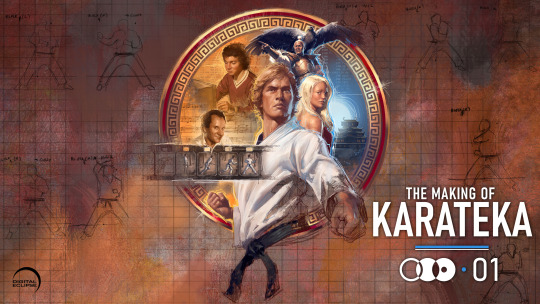
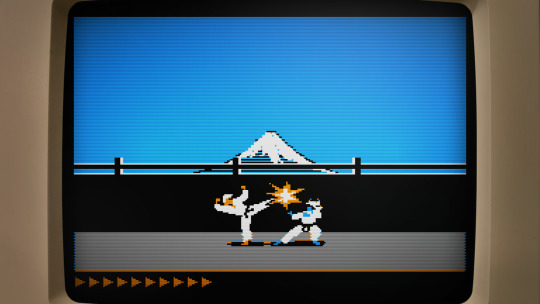
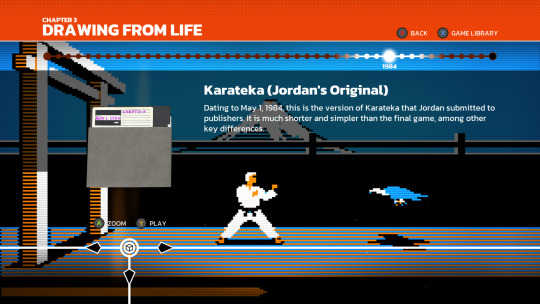


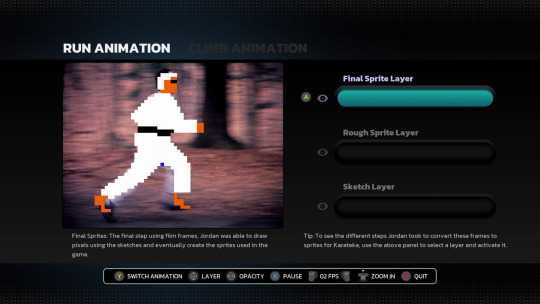
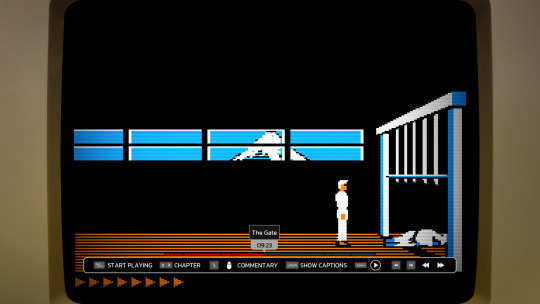
I never played Karateka in the 80s, but as a big fan of Prince of Persia and Jordan Mechner's journals, I was stoked to hear that an interactive documentary about Jordan's prototypical cinematic platformer was in the works by Digital Eclipse.
Released this week, The Making of Karateka on the surface looks like any other game you buy through Steam ($20, Windows-only), GOG, or whichever favorite store or console you prefer (available also for Xbox, PS4/5, Switch). Once the thing loads though, you really get 3 things: a documentary, the original Karateka, and a new remaster.
The documentary part is an audio-visual slideshow retelling Jordan's development story starting with his teenage years pitching his earlier title Deathbounce to the publishing house Brøderbund. It's an interesting look into the iterative process, seen through correspondence letters, journal entries, and many playable builds at various stages of completion. After we reach the eventual rejection of that title, Jordan comes back with a prototype of a visual-narrative experience unseen on home computers. We get to follow Karateka's full life cycle from pre- to post-production, ending with the conception of its sequel (which eventually turned into Prince of Persia). It's a real treasure trove! Fellow pixel artists will appreciate the many graph-paper sketches and interactive overlays of final game sprites compared to rotoscoped outlines and filmed footage. There are also video segments, from a comprehensive breakdown of the music to interviews with other developers reflecting on the impact Jordan's games had on their careers. You'll even encounter a fan letter signed by the one and only "John Romero, Disciple of the Great Jordan and worshipper of the Magnificent Mechner!" (I kid you not, you can't make this stuff up).
Perhaps just as crucial for an interactive documentary like this, you can launch any of the floppy disks in the emulator, trying out various iterations and ports of Karateka.
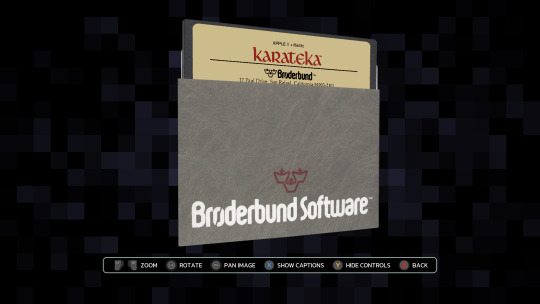
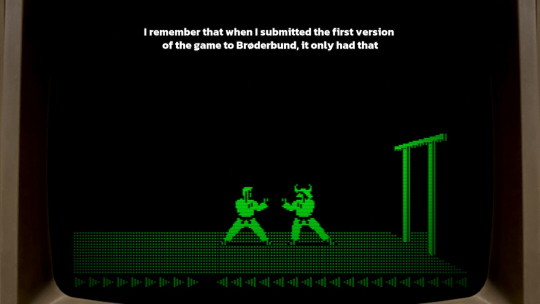
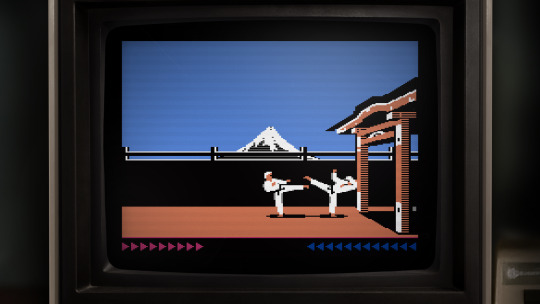
The emulation is fantastic and lets you fiddle with display settings (monochrome or color display, scanlines, pixel perfect or zoomed) as well as enhance the frame rate. You can even rewind the many deaths you will face if you've never played the game before (like me). If you spend some more time obsessing over the weird artifacts of the Apple II hi-res graphics, you might even go down the rabbit hole of realizing that on the Apple II you didn't really paint colors as much as you used different monochrome dithering patterns that the graphics display would then turn into 4 different hues. A fascinating learning experience if you include some of your own research online!
youtube
Add to this the Commodore 64 and the Atari 8-bit versions to compare how the graphics got adapted across the earlier ports and you have a nice way to relieve the mid-80s with a bit of help from modern emulation (I did beat the C64 version without rewinding though!). I'd love to see more art from the other remakes, especially the 16-bit Atari ST port, but I understand their decision to omit playable versions of those due to the lower quality on the gameplay side of the translations.
This brings us to the final part of the package, the modern remaster. Unlike the 2012 complete reimagining of the game (with 3D graphics and all), Digital Eclipse approached the remake as the ultimate port of the original to an imaginary system along the lines of a 90s VGA PC.


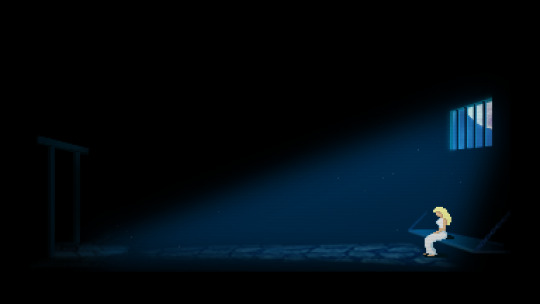
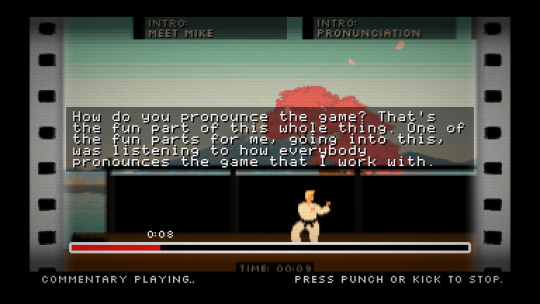
It's well done. Some of the fully-redrawn scenes are a bit overpainted for my taste (I'd prefer a pixel art rendition of the castle than a blurry photographic collage, although there were many games in the 90s that did take this approach), but the in-game graphics are really in style, including the smooth animations that are like one would imagine granted a beefier CPU. It's also a sort of director's cut with previously unseen scenes added, in particular, the battle with the leopard as a clever action-puzzle in the middle. The AI is unfortunately even less challenging than Jordan's implementation. As great as the 6-move fighting system could have been, you yet again resort to simply kicking away opponents as they tirelessly crawl into your range. There isn't even the nuance from the original where you were the one who had to approach some enemies with skilled timing. On the other hand, you now have optional goals and achievements that make the repetitive/easy combat work in your favor (stringing various combos, beating opponents or the level under a time limit …). As the Digital Eclipse president Mike Mika admits at the end of the welcome commentary mode, they didn't manage to achieve their perfect port, but they did come close.
In conclusion, I thoroughly enjoyed playing both the original as well as the remake and while the combat system lacks any sort of depth beneath its stunning animations, Karateka is instead a monumental experience for its presentation. Big characters with personality and realistic motion are displayed through cinematic camera cuts and story vignettes (3 years before Ron Gilbert came up with the word "cutscene"). There are details like animating the unfortunate falling off the cliff at the start of the game, or respectfully bowing to the first guard as they bow in return. Jordan's creative work is precious and worth the attention this release gifts it.
I highly recommend The Making of Karateka to all retro gamers and/or game developers for its immersive documentation which provides an experience that goes beyond the usual video documentaries. It's interactive—just like the subject it's talking about—something I want to see more in the future. And if the $20 by any chance seems high to you, consider that the original retailed at $35 (and that was in 1984 dollars).
youtube
77 notes
·
View notes
Text



youtube
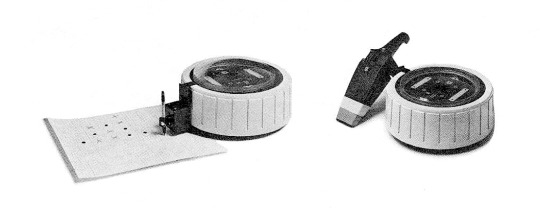
Modulus Base by Sirius, Italy (1984). Modulus is a Commodore 64 driven personal robot available in three separate versions, the base unit, a Service & Security robot, and the full 'Moddy'. "The Base unit can be added to for different functions. As it stands, it can be used in hobbies as a home computer, self propelled peripheral, and can be useful to people wanting to learn how to program robots. The simplest attachments which can be connected to the Base unit are a vacuum cleaner and a plotter-mechanism that uses felt pens to produce drawings of considerable precision." – Modulus Robots.
47 notes
·
View notes
Text

80-US February 1983
Some of the big competitors promising to be more versatile and respectable programming languages than BASIC were covered in this issue (along with regular type-in programs in BASIC). On the other hand, publisher I. Mike Schmidt's "Directions" column mused that as the percentage of American homes with computers was expected to rise from 3% to 85% "in the next five years or so", "canned, ready to run programs" like "Scripsit, VisiCalc, and Profile" would take "the drudgery away from the end user, and allow (almost) the full flower of the computer to be experienced." He also noted how Warner Communications not meeting earnings expectations over "uncertainty over the durability of growth based on video games" had pounded computer company stocks from Commodore to Digital, but supposed that "setback was only temporary."
16 notes
·
View notes